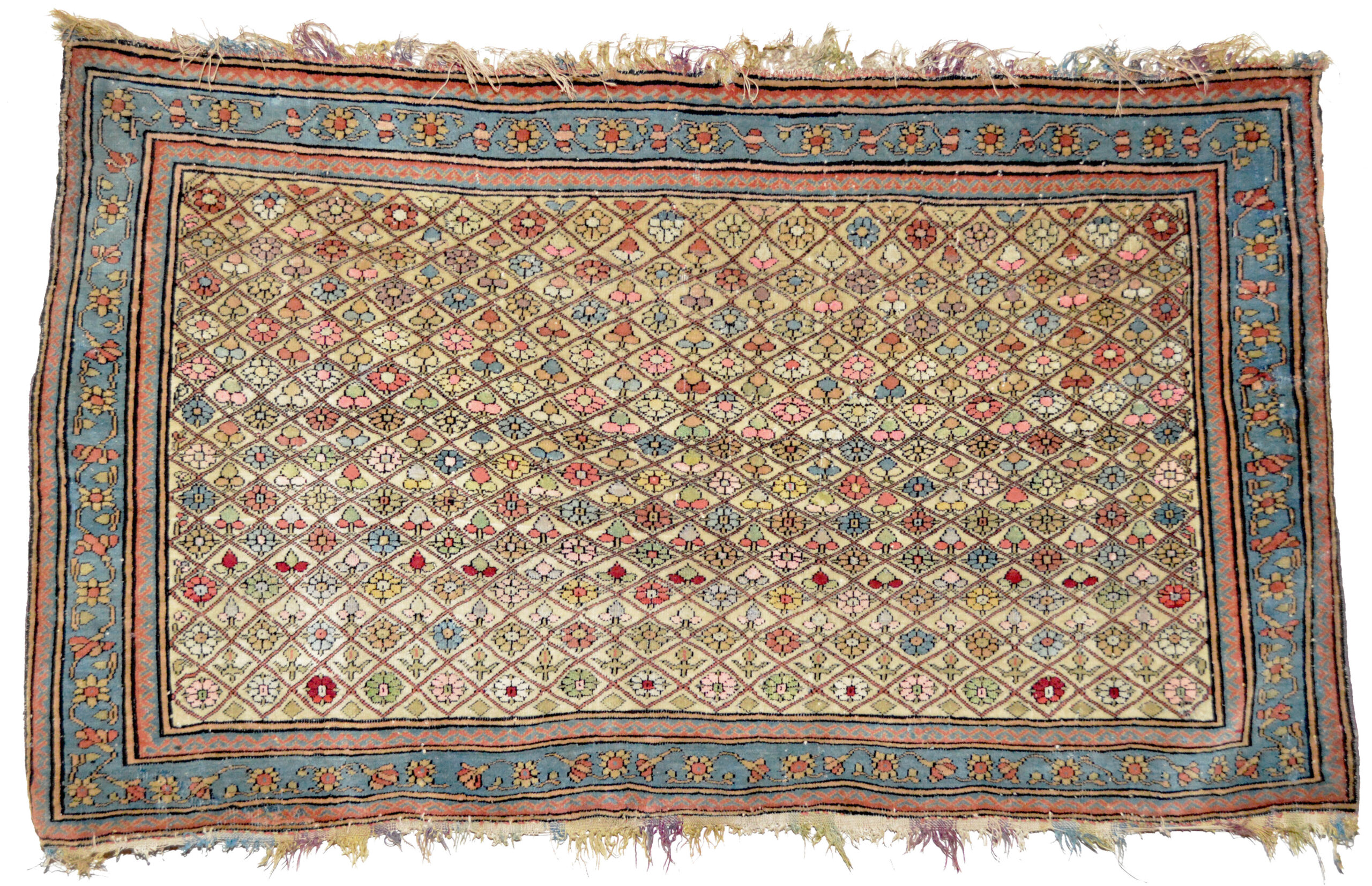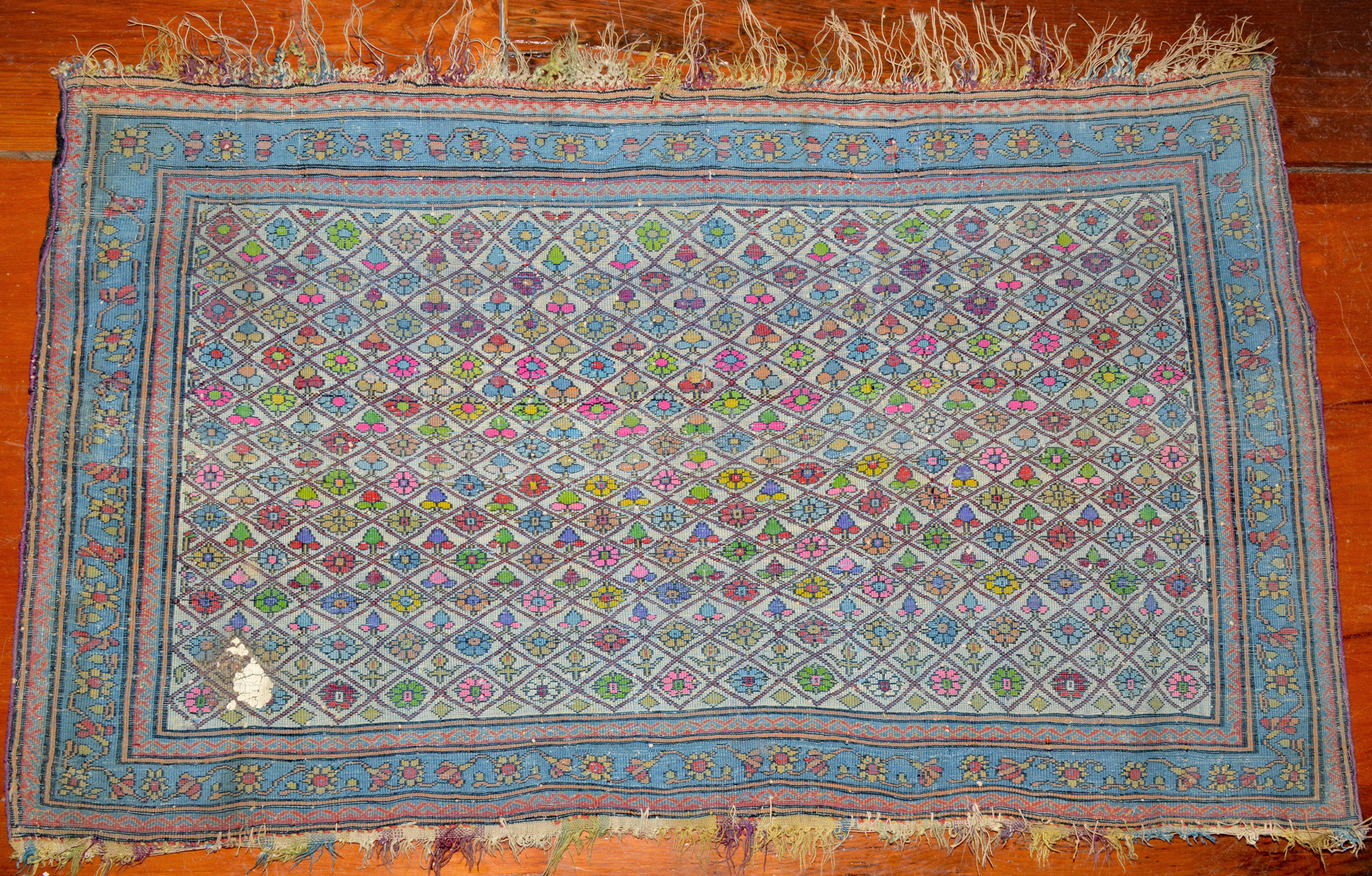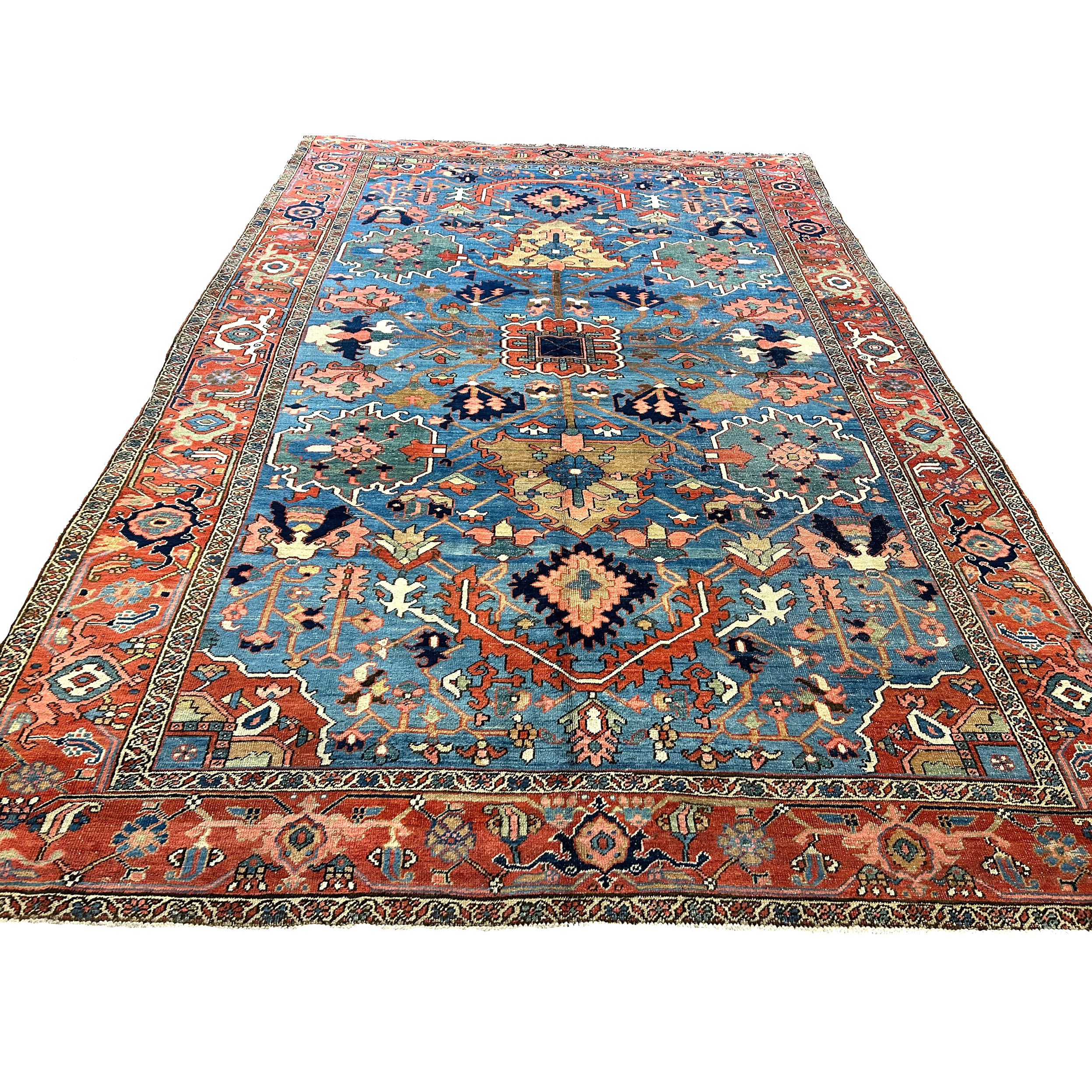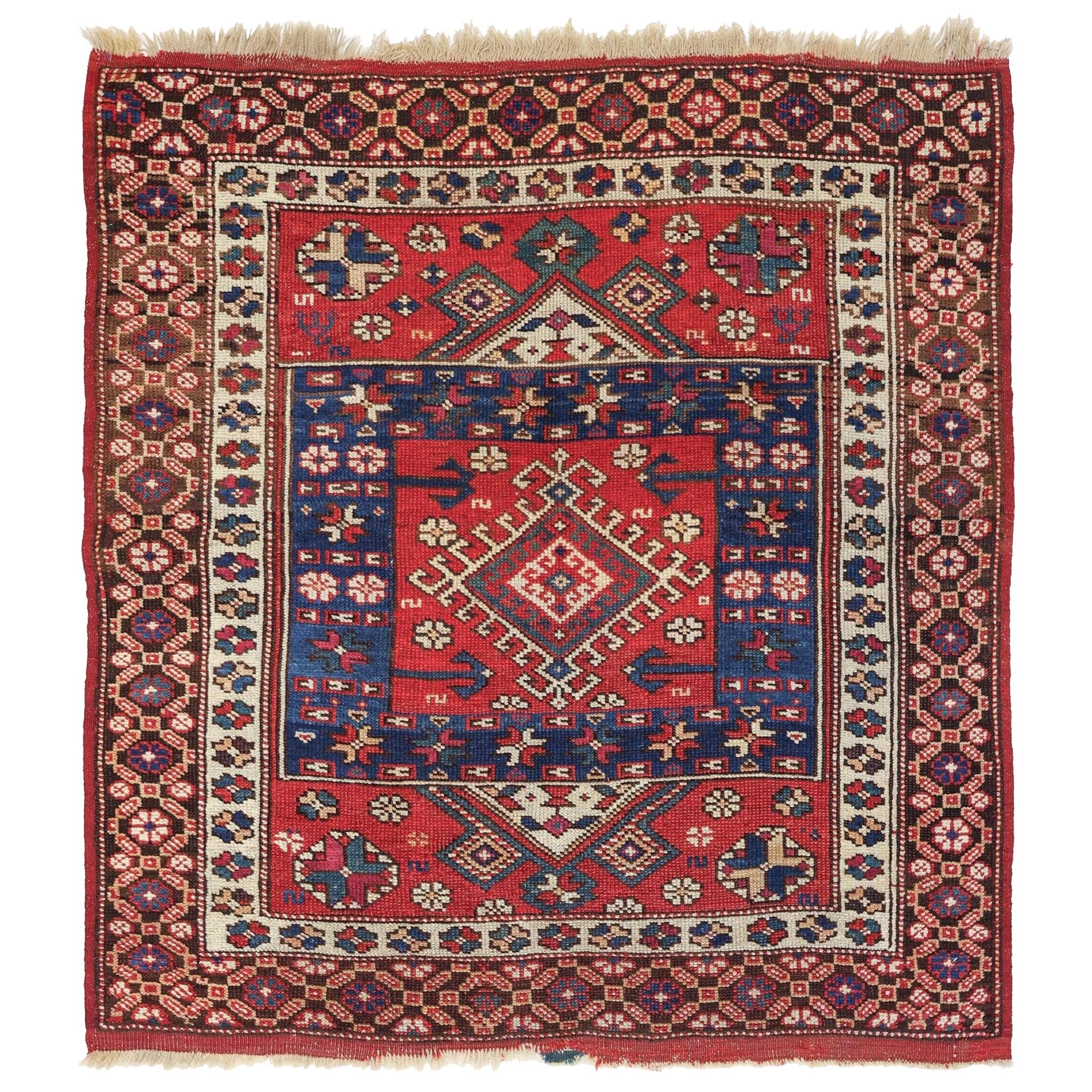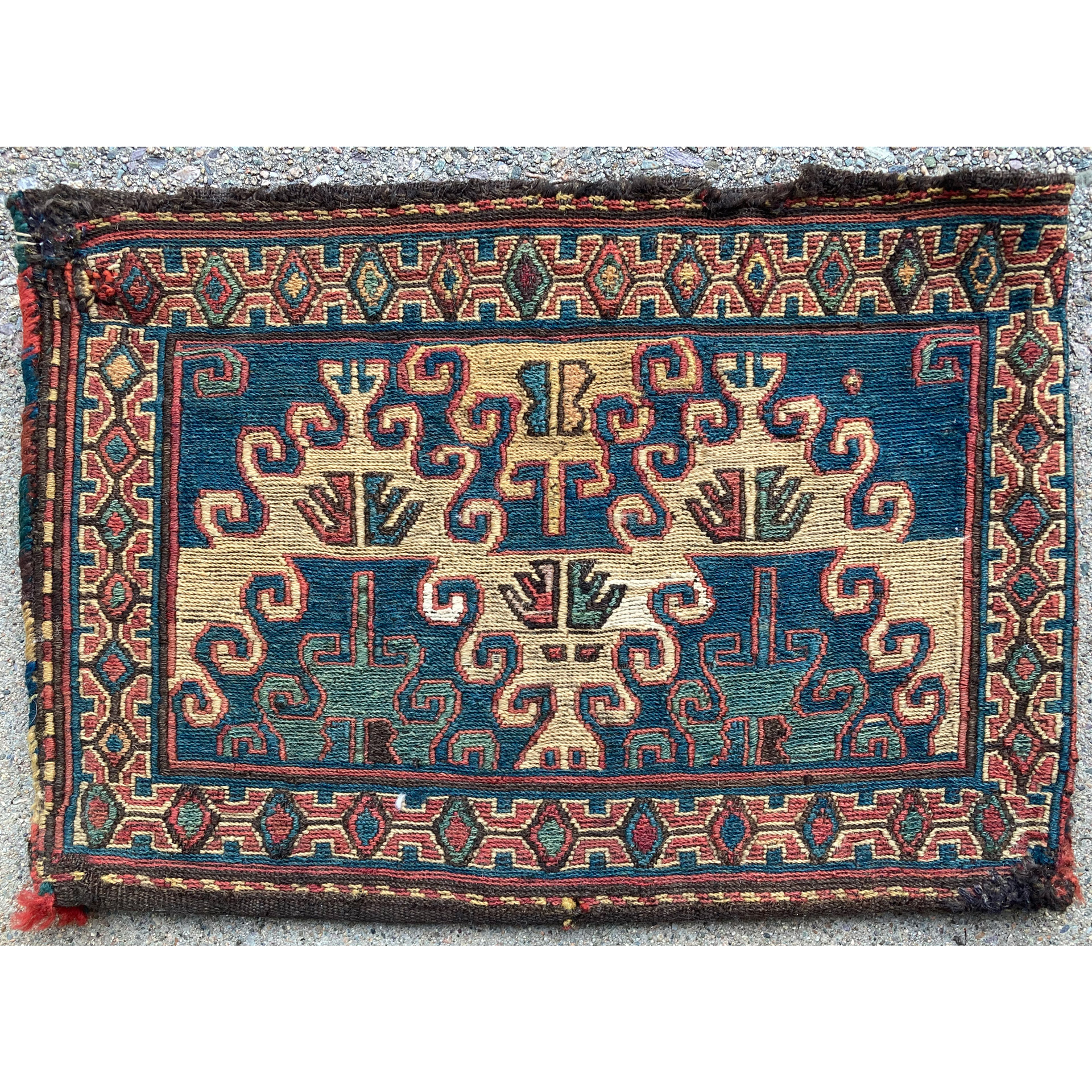3.5 x 2.1 Antique Mohtasham Kashan Rug, Circa 1885
Every so often, we come across a rug that challenges assumptions or what can be considered “knowledge” based on years of experience. These rugs are, to a certain extent, the exceptions that prove the rule. This small Mohtasham Kashan rug is one of those rugs. In that sense, it is important from an art history perspective. Its presence causes us to look at things differently, which I suppose is a good thing.
Synthetic dyes began to be used in antique Turkish rugs as early as the 1860s. In Persian rugs, synthetic dyes seemed to first show up in the 1870s. In both cases, I suspect that is earlier than most people realize. While the majority of late 19th century rugs have predominantly, if not exclusively, natural dyes, some great, even world class, examples have at least one or more synthetic dyes.
This little Mohtasham Kashan “mat” or “poshti” (terms applied to small rugs approximately 2 feet by 3 feet in size) breaks almost all the rules. First, it is woven so that it is wider than it is long, the opposite of conventional formats. Based on the weave and wool, I would place it in the “early” period of Mohtasham Kashan manufacture; i.e., circa 1880 to 1890. It has the light weight, whimsical drawing and pliable handle characteristics of the earlier period; whereas the circa 1900 to 1910 Mohtasham Kashan rugs tend to be heavier, more densely woven, less pliable, with thicker pile, and often more mechanical articulation of the designs.
A look at the back of this rug suggests that the mid blue border is likely a natural dye and there might be an occasional natural dye mixed in with the synthetic colors in the lattice and flower design field. However, most colors appear to be synthetic and not, at least as they appear on the back, of a subtle character. It is a circus of color in such an unexpected way that it is very charming; though we are glad that the colors have faded some on the face of the rug and become more subtle.
The fringe is in a variety of colors and, while having just gotten the rug and needing to examine it more closely, this resembles the so-called “Seven color silk warp” Senneh rugs. We need to examine the rug more closely to see if these warp threads continue through the body of the rug and come out at the other end.
All of this leads to theorizing as to why what is often considered the finest type of Persian rug woven in the last quarter of the 19th century would utilize such wide spread use of synthetic dyes. To this point, Helen and my theory is that these dyes were new to the market. Kashan, being a city, probably had earlier access to them than village areas such as Heriz or Bidjar. And, having a novelty to them, there was probably at least a segment of the market that prized rugs utilizing these dyes. All of this, of course, is conjecture. In the absence of other good explanations, it seems to make at least some sense, though.
We consider this rug to be very collectable. It is certainly distinctive. It is finely woven with a complex design in an unusual size. The face, which is more subtle than the back, is quite beautiful. This rug causes us to examine established thought patterns and perspectives on rugs, I suppose in a similar way to which new styles of fine art, when breaking from precedent, initially might meet with resistance and are then accepted for their own merits.
After almost four decades in this field, not many rugs make Helen and myself think in such philosophical terms. I suppose that makes this piece refreshing in addition to being beautiful in its unique way.
To view detail photos, place cursor on image and use arrows.
Price: $ 8,500
Please, call Helen or Douglas at (781) 205-9817 for additional information.
